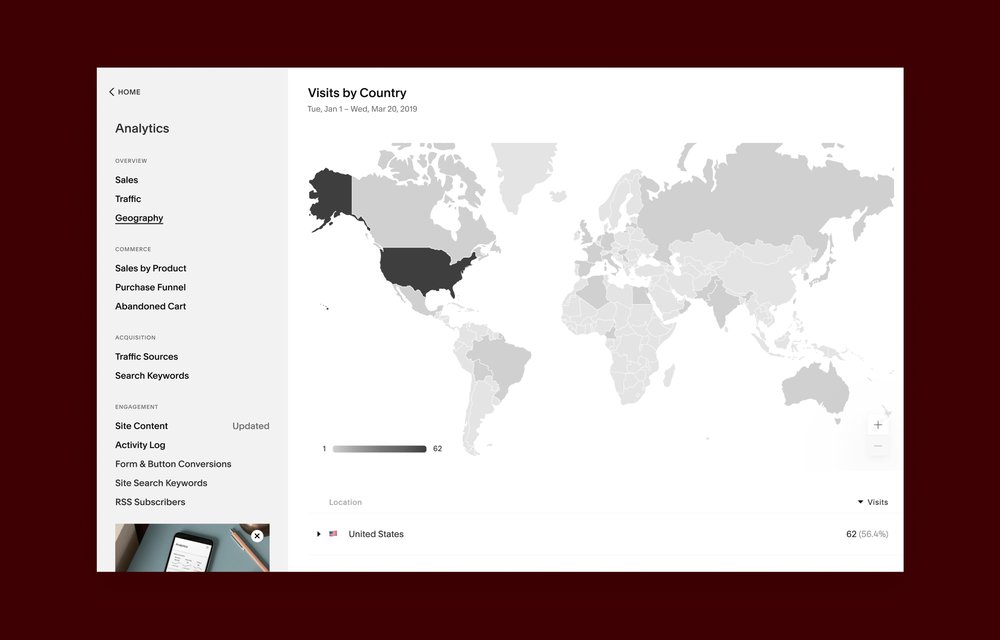In order to sell your business’s products or services, you have to find the people most likely to want to buy them. Locating and building your target audience, however, is not always a straightforward process, especially when your business is based online and serves a wide geographical customer base. Let’s take a look at some of the tools and techniques you can use to more effectively find your target audience.
Understanding types of audience data
Before you start looking for your target audience, it’s important to define what it is about them you’re hoping to uncover. Here are three of the main types of target audience data—choose which of them you’re most interested in learning about first.
Purchase intention
Also known as customer or buyer intent, purchase intention is a measure of a person’s tendency to buy a certain product or service. Are they browsing for information? Are they checking out a few different brands? Have they looked you up specifically to find out more information? Or have they come directly to a specific product page with the intention of buying? Knowing how likely a specific audience is to buy from you will help you craft the right kind of content to encourage their buying behaviors. For example, you could create product comparison videos to target people who are in the process of considering the pros and cons of different brands.
Interests
Knowing what kinds of recreational activities interest your audience can help you to target them more effectively. Imagine, for instance, that the people most likely to buy from you read a particular online publication; maybe you could ask to write a guest blog post for that publication. Or you may choose to spend money on advertising in certain locations (e.g., specific websites or social media channels) that reflect your target audience’s interests.
Subculture
Members of any target audience tend to fall into certain subcultures. In other words, they conduct their lives as part of distinct, smaller cultural groups that form part of the wider culture. Data regarding subcultures can reveal a huge amount about your target audience because it highlights shared attitudes, behaviors, communication styles, and other identifying traits. All of this can help to shape the way you create and deliver content.
Once you have a clear idea of what kind of information you’re looking to reveal about your target audience, your research about them can become much more focused.
Analyzing your existing customer base
If your business is already up and running, the people who have bought from you offer the most reliable evidence as to the characteristics and behaviors of your target audience. As long as those customers have consented to you collecting and using their data in this way, analyzing your existing customers is an important early step in growing your audience.
Among your existing customers, you should be on the lookout for:
Demographic profiles: e.g., the age groups of people buying from you
Geographic profiles: Do you sell more in certain locations than others?
Frequency of visits to your website prior to purchase: Does your audience need a lot of convincing before purchasing, or is your website navigation not effective enough?
The customer journey through your website: Which other pages did they visit before they purchased?
Sales patterns: Are certain groups of people buying certain types of products and services?
Abandoned checkouts: At what point in the journey did the active customer decide to abandon their cart, and what does this say about their experience of your site?
This type of data can be easily collected using website tools like built-in analytics and forms. However, they aren’t the only ways of gathering important information about your existing customers. You can also link to surveys via email campaigns to gather more in-depth qualitative data, and analyze the feedback customers are leaving on your social media accounts. Each of these tactics helps to build a detailed picture of your target audience for future sales and marketing activity.
Conducting a market analysis
As well as examining your existing customers, you should also look outwards to the wider buying market to see how certain audiences interact with brands. Start by analyzing your direct competitors.
Find out what their websites are like, which of them are financially successful, and which are underperforming. Crucially, look into what people say about them on social media and review sites. This will enable you to identify their strengths and weaknesses, so you can adopt their successful audience development strategies and avoid repeating their mistakes.
Now go beyond your direct competitors to identify broader market trends. Read every available, relevant, and recent industry research or trend report. Also, follow publications and influencers in your industry on social media to get bite-sized summaries of industry trend data. By working out how certain audiences are interacting with brands, you can adapt to the changing behaviors of the market and target your audiences more successfully.
Another great way to analyze the market is to get people to sign up for free product or service trials on your website in exchange for their feedback. You can do this by adding a promotional pop-up to your website and promoting the trial on your social media accounts. This approach will help you to see which types of people like what you’re doing and which don’t. That information further narrows down your target audience and enables you to focus your product and marketing strategies to meet their wants and needs.

